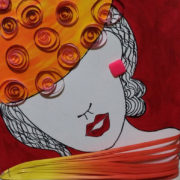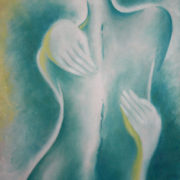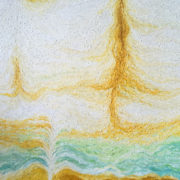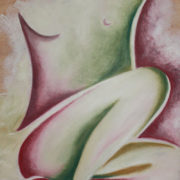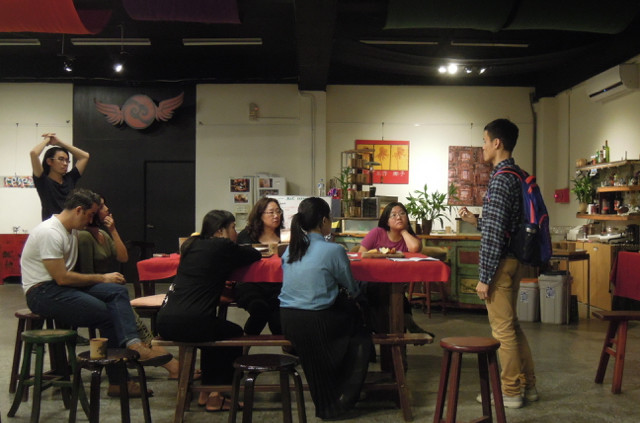Pragya Borar
- She: Her own self-expression
- My Happy Place
- Out and Loud
- Soul Talk
- Self-Lover
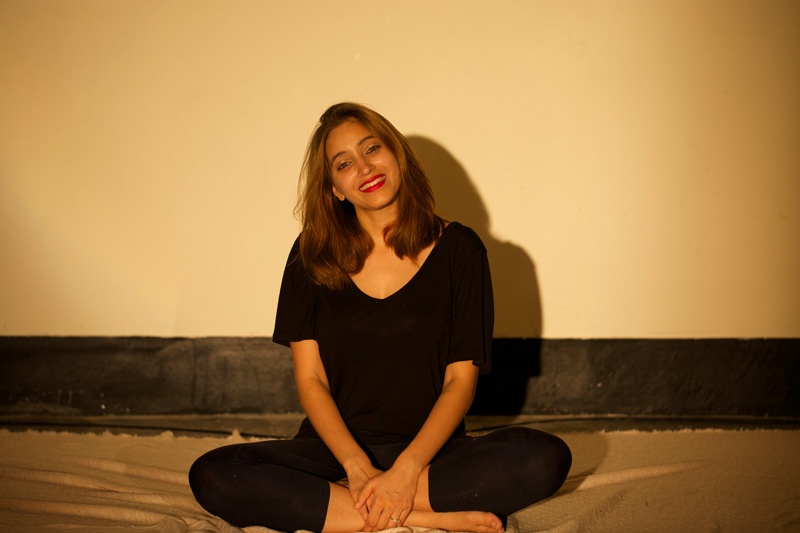
ARTIST BIO
Pragya is a self-taught mixed media artist. She started playing with colors at the age of 5. Art is symphony of her life and her self expression. Through her art she likes to discover her boundless inner creativity and passion, as she constantly strives to communicate her inner self through it.
Pragya’s current work of art on watercolor paper and canvas is about women and nature. It focuses on the journey of being a woman and how everything about nature inspires her to keep doing what she loves.
She believes women need to be themselves in all the phases of life irrespective of what they are asked to be. They should embrace their imperfection because it makes them who they are.
Through her art, Pragya has tried to push herself to explore new boundaries. She hopes to inspire people to pursue their passion. Magic happens when you don’t give up even though you want to. The universe always falls in love with a stubborn heart.
Kristine Huang
- Layers of hurt, hate, love, lost…!
- Steps to be freedom!你腳下踩過的⽚段重要的提醒這我, !⾃由的美好!
- embrace no.2!有時候, 擁抱⾃⼰花的⼒氣需要很⼤很⼤!
- please feel me in 8 different ways!
- Me, myself and I!
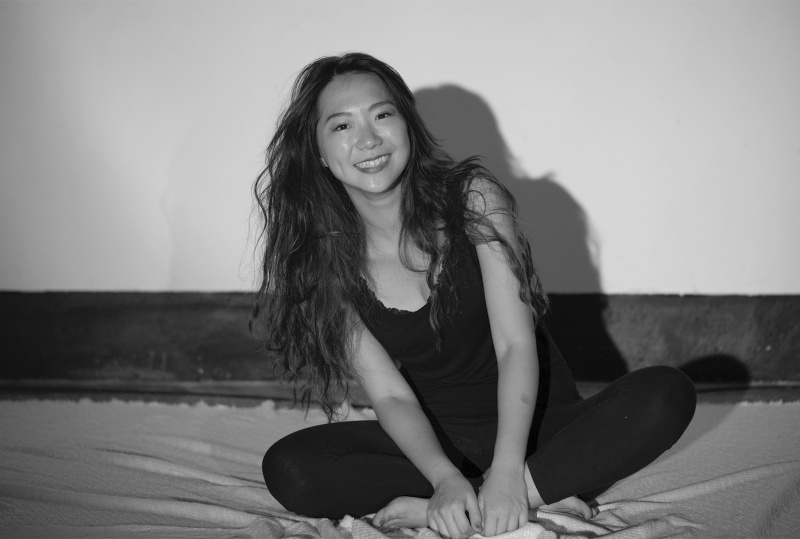
ARTIST BIO
“透過繪畫,我把自己一一拼整回來,表達一則則烙印在心裡的故事。”Ting Wei Huang 就讀美國洛杉磯時尚設計學院主修時尚設計,並在2015年赴義大利佛羅倫斯Polimoda 服裝設計與行銷管理學院進修。Ting Wei的繪畫就像一篇篇的日記,藉由顏色的變化與柔軟的線條來敍說故事
Ting Wei Huang studied at FIDM in Los Angeles, USA, and majored in Fashion Design. In 2015, Ting Wei moved abroad and attended Polimoda Fashion Institute in Florence, Italy, and majored in fashion design. Ting Wei’s paintings are portrayed through the style of journal entries. She tells stories through changing color shades and elegant lines.
ARTIST STATEMENT
Ting Wei Huang作品傾向於傳達自我探討的意義與意象。擅長放大細微的感覺,抽象具體繁雜的內容,擁抱這份觸動,在創作裡享受著,跳舞與歌唱… 從小就愛繪畫的她, 藉由繪畫藝術傳達如何面對自己、了解自己,進而接受自己的過程。透過反覆動作的描繪手筆,不斷產生矛盾與掙扎,勾勒出她內心深處那些想被看見的輪廓。Ting Wei希望她的藝術作品可帶給人們一份喘息和沈澱的空間,靜下來去感受與擁抱生命中的美好。
Ting Wei Huang’s works are based on introspection. From abstract concepts to concrete stories, the content of her paintings consistently brings forth a variety of intricate details. While indulging in dancing and singing, the pure enjoyment lies within each creating process. Ting Wei found her love and passion in painting since a young age. The art of painting and creating provides a leeway for Ting Wei to dive into self-acceptance, self-understanding, and eventually, self-affirmation. Through her paintings she has tried to reflect her different feelings from happiness to struggle, she hopes that her work of art can make people embrace the real beauty of life.
I was devoured, and then lifted into the clouds
Red Room presents Visual Dialogues XIII / Sitar & Tabla Performance
Sunday, 4th December 2016: I was devoured, and then lifted into the clouds.
Not in a dream, but rather, during the course of a day of art and community at Red Room 紅坊國際村. Capable of being many things to many people—art gallery, concert venue, workshop space, spoken word poetry slam, and cozy spot to hang out—Red Room is a special place for the arts lovers of Taipei.
The warm community fostered by Red Room’s eclectic, friendly approach to the arts is singular in its lack of judgment. I’ve never much enjoyed going to art galleries, leery of those sterile, sacred spaces where I’m often shushed for laughing too loudly. Devoured 吞噬, the gallery opening I attended that Sunday at Red Room, offered an entirely different experience. We looked at, and talked about the art, of course—but we also snacked on chips and fruit, shared plans for the holidays, and felt free to explore the space. I even skimmed through Red Room’s book collection while I was waiting for the next event, a sitar and tabla concert.
(I love that about Red Room. The entire space is available for people to use—nothing is off-limits. There’s no pressure to conform to preset expectations. Artists and art lovers can be snobs, which is not always a bad thing—but Red Room cultivates an atmosphere of openness to all, which I find refreshing. There’s freedom to experiment in such an atmosphere.)
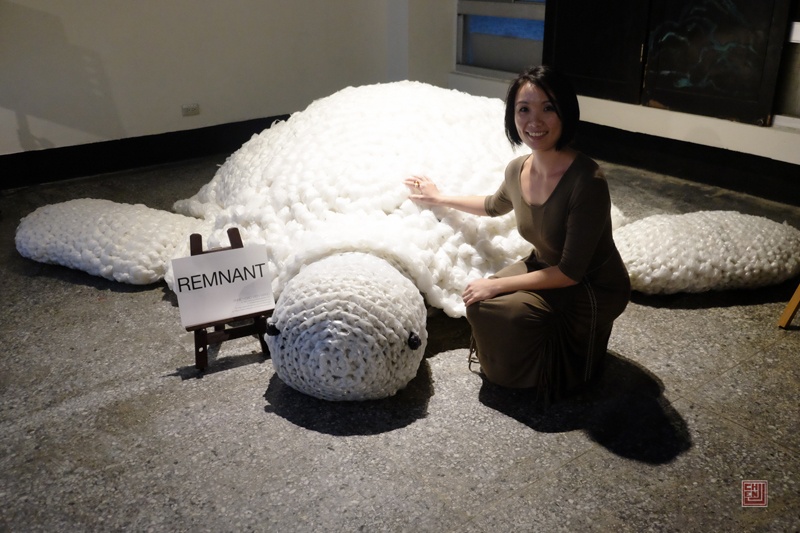
Annie Hsiao-Wen Wang, collected plastic trash from the ocean, and constructed a turtle from all that human waste
When I first walked in that Sunday afternoon, I didn’t get very far. There was a giant white turtle right at the door, greeting people as they came in. The video projected on the wall above it showed the making of the turtle—how the artist, Annie Hsiao-Wen Wang, collected plastic trash from the ocean, and constructed a turtle from all that human waste. Turtles, of course, are among the many creatures harmed by plastic pollution.
We all could use more reminders of the environmental impacts of the daily things we do without really thinking about them. Eating meat, one of the subjects of T.K, or Taylor Kaku—the other artist featured in the exhibition—is another thing many of us don’t really think about, although it deserves reflection. T.K’s wood sculptures of animal carcasses confront us with the once-living creatures that are made into the meat we eat. Devoured吞噬, as the thirteenth edition of Red Room’s Visual Dialogues series, certainly made me reflect on practical things I can do in my own life to live up to my theoretical ideals.
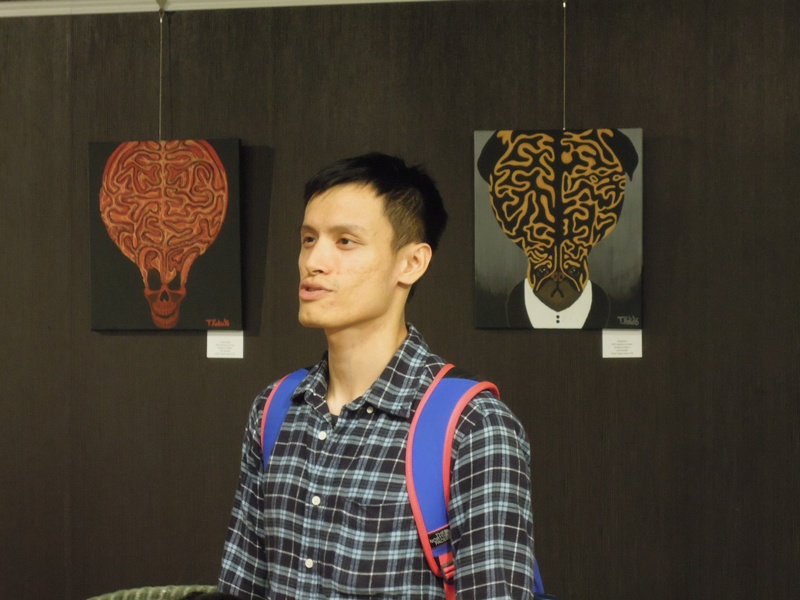
T.K’s wood sculptures of animal carcasses confront us with the once-living creatures that are made into the meat we eat.
Although the two artists were there in person, and they briefly introduced their work, they didn’t host a panel talk like I thought they would. I was surprised by this, at first, but it makes sense in the context of Red Room’s informal atmosphere. There’s no need to host a formal panel when you can just go up and talk to the artists yourself—or so it must be supposed.
T.K is Taiwanese, while Anne Hsiao-Wen Wang was born in Taiwan but grew up in Australia. Red Room is both internationally minded and focused on the local. The sitar and tabla performance later that Sunday was a great example of this dichotomy.
The audience was predominantly Taiwanese; the sitar player, Hansraj Prabhakar, was visiting from India at the request of a former student, who lives in Taiwan. The tabla player, Toshiro Wakaike, hails from Japan.
Eventide. People began to slowly file in. They lingered by the giant sea turtle at the door, peered closer at the paintings on the walls, and enjoyed the art from Devoured 吞噬while they were waiting.
As they sat close together on the large red carpets covering the floor—no shoes allowed—the room began to fill. Red Room transformed seamlessly from a reflective art gallery into a buzzing concert venue, with art included. I love that about Red Room. It serves versatile purposes, all with the aim of making art—all kinds of art, from music to visuals to the spoken word—available to those who seek it.
When the concert finally began, the room came alive with the shared pleasure of being transported, floating, into a world where songs never end. The music was soaring high in the clouds. Down on earth, people let themselves be lulled into a trance and carried away…
Of course, nothing does go on forever. When the music finally came to a close, we all woke up from our collective dream. As we departed, on our separate ways, we said our farewells cheerfully, for we knew we might come together again some other night—at Red Room, where anyone can have a voice, and where everyone will be heard.
by April Xiong





